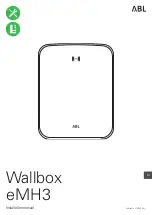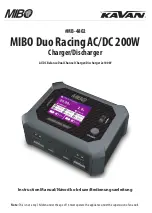
8
• When using the camera on battery power at
low temperatures, try to keep the camera and
extra batteries as warm as possible. Batteries
which run down at low temperatures may be
restored after they are warmed at ambient
temperature.
• Perspiration or oil from your hands on the
battery contacts could prevent them from
operating. Before loading batteries, wipe the
terminals with a dry, clean cloth.
• Before going on a long trip, especially before
traveling abroad, purchase an ample supply
of extra batteries. The recommended batteries
may be difficult to obtain while traveling.
• Always recharge Ni-MH or Ni-Cd batteries
with a charger recommended for use with
these batteries.
• Before using Ni-MH or Ni-Cd batteries, always
read the instructions provided with purchase
of these batteries.
• To avoid personal injury or damage to the
camera, always inspect batteries before
loading. If you notice leaking, damage to the
battery cover or insulation, discoloration,
warping or any other abnormality do not use
the batteries.
• Recommended temperature ranges for Ni-MH
batteries:
Operation 32
°
~104
°
F
Charge 32
°
~104
°
F
Storage
−
4
°
~86
°
F
• Using, charging, or storing the batteries
outside these ranges could shorten battery
life or affect battery performance. Always
unload the batteries from the camera before
storing the camera and batteries for a long
period.
• Alkaline battery performance is limited by a
number of factors: manufacturer, date of
manufacture, warranty period, low
temperatures. Battery service could be
shortened by any of these factors. Generally
alkaline batteries perform poorly at low
temperature.
• Ni-MH batteries are rechargeable but
chemical reactions could cause the battery
capacity to deteriorate. The batteries can be
recharged up to approximately 300 times,
depending on operating conditions.
IMPORTANT SAFETY INSTRUCTlONS (continued)
• If you use Ni-Cd batteries, make sure that you
always fully charge 4 batteries at a time on a
recharge unit rated for use with Ni-Cd
batteries. If you do not use Ni-MH batteries
for about 1 month, you may not be able to
restore them to full power with one full
recharge. You may need to recharge them
several times to restore them to full power.
Monitor and control panel light
• The fluorescent lamp of the monitor and
control panel has a long but limited service
life. If either display becomes dark or begins
to flicker, contact an Olympus authorized
service center.
• At low temperatures, the light could be slow
to light and the color could be different. When
using the camera in cold weather, try to keep
it as warm as possible. If you notice changes,
normal operation will be restored after the
camera is returned to a warm location.
• The monitor of this camera is a high precision
device. However, you may occasionally notice
residual display of frequently displayed
images, and the color and brightness of the
display could change with the angle of view.
These phenomena do not indicate problems,
but could occur with normal operation of the
monitor.
Summary of Contents for E-10 - 4MP Digital Camera
Page 20: ...18 ...
Page 86: ...84 ...
Page 98: ...96 ...
Page 112: ...110 ...
Page 138: ...136 ...
Page 158: ...156 ...











































